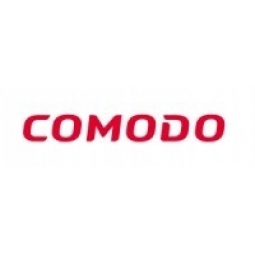Download PDF
Enhancing E-Commerce Trust and Security: A Case Study of Zamberg.com
Applicable Industries
- E-Commerce
- National Security & Defense
Applicable Functions
- Quality Assurance
Use Cases
- Fraud Detection
- Tamper Detection
Services
- Cybersecurity Services
The Challenge
Zamberg.com, a leading distributor of high-quality German grooming products, was facing a significant challenge in earning the trust of new customers on their website. Despite being the largest distributor of products made by craftsmen in Solingen, Germany, and the exclusive U.S. distributor for many European products, the company was struggling with the common consumer fear of online fraud. This fear, which affects 24% of consumers, stems from the potential for scams, phishing, pharming, and 'man in the middle' attacks. The lack of a distinguishing method to assure customers of the website's authenticity and security was hindering Zamberg.com's potential for higher sales growth.
About The Customer
Zamberg.com is a leading distributor of high-quality German grooming products. It is the largest distributor of products made by craftsmen in Solingen, Germany, and is the exclusive U.S. distributor for many European products. Despite its strength in exceptionally made, German steel grooming products, the company was facing challenges in earning the trust of new customers on their website. The company already had a strong hold on its market, but the fear of online fraud was a major obstacle holding Zamberg.com back from higher sales growth.
The Solution
To address this challenge, Zamberg.com turned to Comodo, a cybersecurity company, to help earn user trust and assure customers of the website's authenticity and security. Zamberg.com implemented two programs from Comodo: the EV SSL Certificates and the HackerProof Software. The EV SSL Certificates use an extensive background check to promote an authentic site. When a site features an EV SSL Certificate, the address bar of the page turns green, indicating authenticity. Pages with this certificate also feature a seal that provides info on the site’s owner, proving that the website is accountable for its content. The HackerProof Software, on the other hand, emphasizes to customers that the website is safe from hacker attacks. It exposes any vulnerability to hackers and indicates the same to users, helping to relieve any doubts customers may have about the safety and privacy of the information they submit to a website.
Operational Impact
Quantitative Benefit
Related Case Studies.

Case Study
Data Capture for Afghanistan Forces
Electronic equipments on the field of Afghanistan provided information on the status of the vehicle and to identify potential threats surrounding it to the British Force. The monitoring and interpretation of this data requires robust and sophisticated digitization for data capture and communication.

Case Study
Digital Transformation of Atlanta Grout & Tile: An IoT Case Study
Atlanta Grout & Tile, a Tile, Stone & Grout restoration company based in Woodstock, Georgia, was facing challenges with its traditional business model. Despite steady growth over the years, the company was falling behind the web revolution and missing out on the opportunity to tap into a new consumer base. They were using independent software from different vendors for each of their department information and workforce management. This resulted in a lot of manual work on excel and the need to export/import data between different systems. This not only increased overhead costs but also slowed down their response to clients. The company also had to prepare numerous reports manually and lacked access to customer trends for effective business decision-making.

Case Study
Major Aerospace Company Automates Asset Management
The O&M division of an aerospace and global security company was using spreadsheets to manually track more than 3,000 assets assigned to students and staff. Maintaining audit trails for this high volume of equipment became increasingly time-consuming and challenging. The chore involved knowing precisely what equipment was on hand, what had been issued, its location and the name of the custodial owner of each item. Every aspect of this task was carried owner of each item. Every aspect of this task was carried out by individuals with spreadsheets. Manually documenting the full lifecycle of each asset added to the burden. This included tracking maintenance requirements and records, incidents and damages, repairs, calibrations, depreciation, and end-of-life data.

Case Study
Securing a Large Data Center in the EMEA Region: An IoT Case Study
A leading data-center operator in the EMEA region, with multiple facilities spanning over 25,000 square meters, faced significant security challenges. The operator experienced interruptions in their internal IT network due to unsupervised work of third-party technicians. Despite having a high-end building control system that provided 24x7 monitoring and control to all the building’s infrastructure, the data center was vulnerable from a cyber perspective as it was connected to the IT network infrastructure. The operator launched an urgent OT cyber security project that included both IT-OT network segmentation and OT network asset mapping and anomaly detection. The main objectives were to harden the security of the server systems, secure the facility’s power supply and server cooling system, strengthen the segmentation between building and operational systems, create a visual OT network map, and set up a system for presenting supply-chain attacks that may threaten the data center through equipment vendors’ maintenance activities.

Case Study
IFFCO Boosts IT Performance and Innovates Agriculture with Oracle Cloud
Indian Farmers Fertiliser Cooperative Ltd. (IFFCO), the world’s largest manufacturer and marketer of fertilizers in the cooperative sector, was facing several challenges in its quest to innovate and improve the livelihood of farmers in India. The organization had recently launched a new product, nano urea, which brought new demands to IFFCO’s cloud computing needs. The organization needed a reliable cloud vendor to support the processes of 6–7 new manufacturing plants during the upcoming year, enhancing its production capability 300–350 million bottles of nano urea to meet increasing demand. IFFCO’s cloud adoption was driven by a need to innovate. The organization wanted capabilities for a dynamic business that can adapt to the changing needs of the market while growing fast. However, it was inhibited by rigid on-premises data center deployments and the overhead of maintaining legacy systems. IFFCO wanted to apply the elasticity and availability of cloud for improving overall performance of applications at lowest possible operational overhead. Lastly, IFFCO needed to provide the benefits of its technology to all its stakeholders, including employees, members, transporters, and farmers, some of whom have limited literacy. To accommodate all stakeholders, IFFCO wanted to add a voice interface to its applications.

Case Study
Enhancing Security Precision with IoT: A Case Study of Guardsman Group
Guardsman Group, a leading security company in the Caribbean, faced a significant challenge in maintaining the security of its digital infrastructure. The company provides security equipment, personnel, and systems for various businesses across the region. However, one of its offices experienced a security incident that affected all communications at that location. The existing security tools were not sufficient to provide the necessary protection, and it took hours to identify the source of the issue. This incident highlighted the need for a dynamic solution that could proactively identify threats. The company's primary concern was any disruption to its business, as it manages a significant portion of Jamaica's money and cannot afford for its operations to go down.





